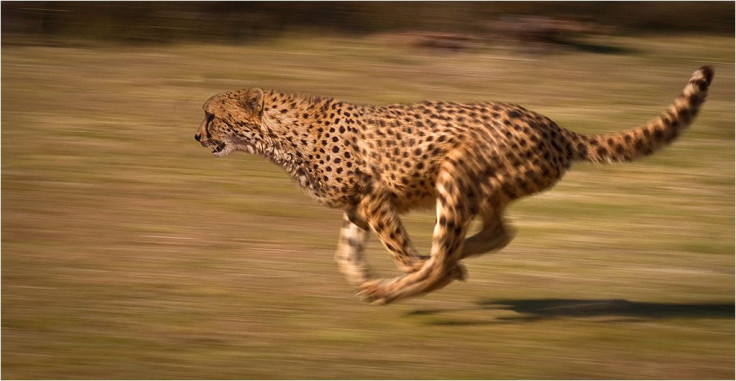The World’s Fastest Land Animal Has A New Name: Meet Paratarsotomus Macropalpis, A Mite Made For Speed

Sorry, Mr. Cheetah, but you've been outrun – by a creature the size of a sesame seed.
Paratarsotomus macropalpis, a species of mite that’s endemic to Southern California, was recently found to be the world’s fastest land animal, researchers announced Sunday. How exactly did something with legs as small as splinters defeat the African savanna’s best sprinter?
Researchers say it’s all about how you calculate movement. At top speeds, paratarsotomus macropalpis can cover 322 body lengths per second, a measure that, in some ways, is a better indicator of how fast something is going than miles per hour because it reflects how quickly an animal moves relative to its own body size.
If a human could cover 322 body lengths in one second, she would be travelling at 1,300 miles per hour. At that speed, a human runner could circle the Earth in less than 20 hours – or make a round trip from San Francisco to Washington state for a cup of Seattle’s finest coffee in about 75 minutes.
In that regard, cheetahs top out at about 16 body lengths per second, the equivalent of roughly 70 miles per hour.
The report, published with the Federation of American Societies for Experimental Biology, could help advance researchers’ understanding of animal movement.
“It’s so cool to discover something that’s faster than anything else, and just to imagine, as a human, going that fast compared to your body length is really amazing,” Samuel Rubin, a physics major at Pitzer College in Claremont, Calif., who led much of the fieldwork that documented the mite’s movements, said in a statement. “But beyond that, looking deeper into the physics of how they accomplish these speeds could help inspire revolutionary new designs for things like robots or biomimetic devices.”
Mites, like ticks, are small arthropods (invertebrate animals that have exoskeletons) and are among the most diverse and successful of all invertebrates. They live in all kinds of habitats, from soil to water to leaves to hair follicles. There are more than 48,000 known species of mites in the world.
The paratarsotomus macropalpis mite was discovered in 1916, but its habitat and food preferences are still somewhat of an enigma. Researchers were recently able to document the mite’s running abilities using a high-speed camera. They found that in addition to the mite’s record-breaking speed, the little critter had the amazing ability to travel on concrete whose temperatures reached 140 degrees Fahrenheit – hot enough to kill most creatures, according to Nature World News. They were also incredibly good at stopping and changing directions.
Prior to the discovery of the paratarsotomus macropalpis, the world’s previous record-holder for speed in terms of body lengths per second was the Australian tiger beetle, whose number was 171.
The Australian tiger beetle is trailed closely by the wind scorpion (which moves at several dozen body lengths per second), followed by the American cockroach (50 body lengths per second) and, finally, the cheetah.
© Copyright IBTimes 2024. All rights reserved.






















